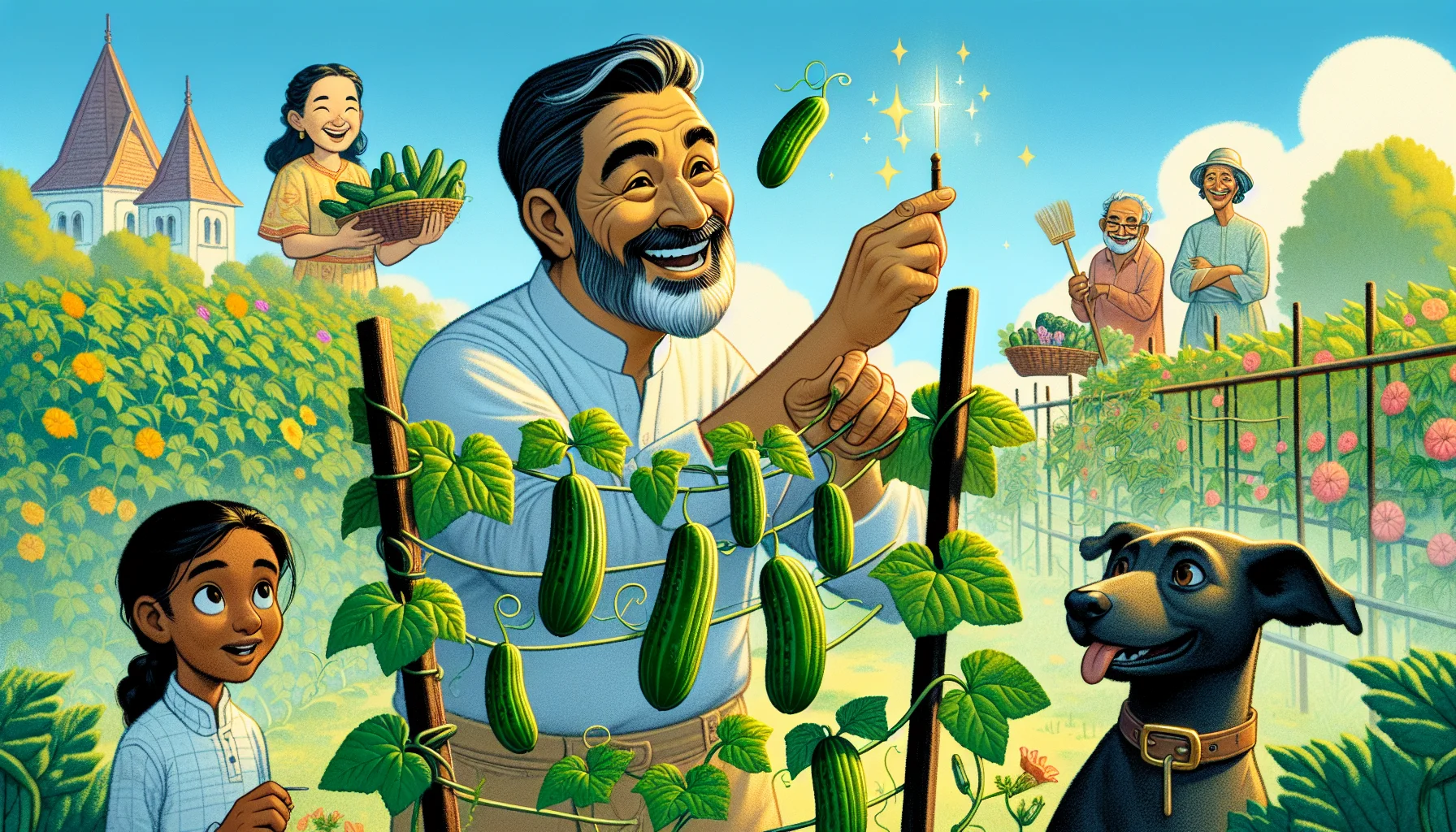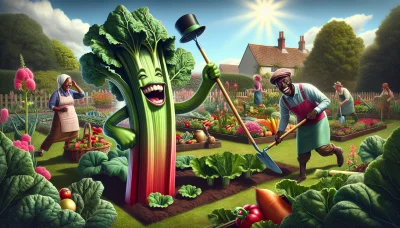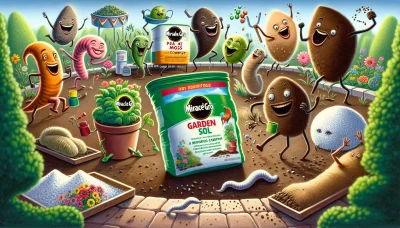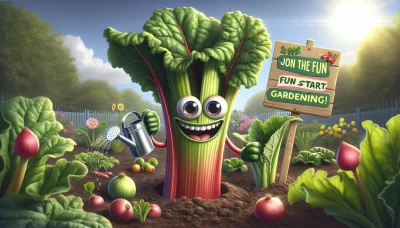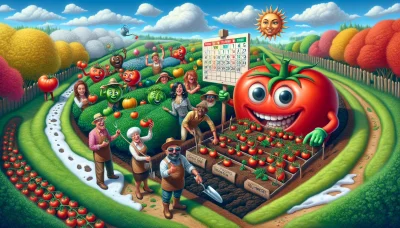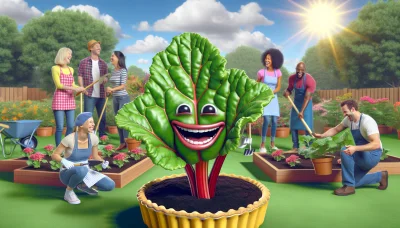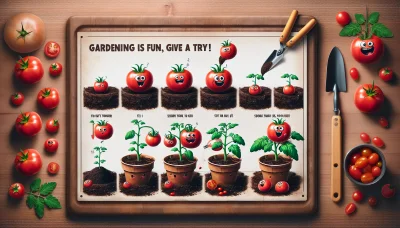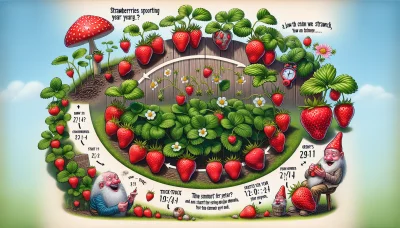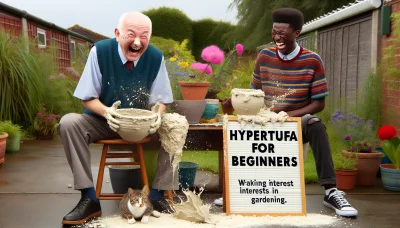How to grow pickles Quiz
Test Your Knowledge
Question of
How to Grow Pickles: A Beginner's Guide
Growing pickles can be a delightful and rewarding endeavor for any gardening enthusiast, from beginners to seasoned green thumbs. Contrary to what the name might suggest, the process actually involves planting and nurturing cucumbers, which are then transformed into pickles through the magic of pickling. Embarking on the journey of growing your own pickles not only connects you with the cycle of nature but also offers the joy of harvesting your own crisp, delicious pickles right from your garden. Imagine the satisfaction of serving a dish or snack featuring pickles that you planted, cared for, and pickled yourself. This guide aims to demystify the process and help you embark on your pickle-growing adventure with confidence and excitement.
Understanding Pickle Plants
Pickles are a common misconception in the world of gardening and cuisine; they are not grown but are instead made from cucumbers. This transformative process involves fermenting or brining cucumbers, which turns them into the crunchy, tangy pickles we enjoy. The best cucumbers for pickling are generally smaller, with thinner skins and fewer seeds. Varieties such as Kirby and Persian cucumbers are often favored for their ideal texture and flavor after pickling.
Step-by-Step Guide to Growing Cucumbers for Pickling
- Select the Right Soil and Seeds: Choose a well-draining soil rich in organic matter. Pick cucumber seeds specifically bred for pickling, as they will produce the right size and texture for pickles.
- Planting: Sow seeds directly in the ground after the last frost when the soil is warm. Plant seeds about 0.5 inches deep, in rows that are 4 to 6 feet apart. For trellising, plant seeds 1 foot apart.
- Watering: Cucumbers need consistent moisture to grow. Water deeply at least once a week, more frequently during hot, dry periods. Avoid watering the leaves to prevent diseases.
- Mulching and Fertilizing: Apply a layer of organic mulch around the plants to retain moisture and suppress weeds. Use a balanced fertilizer every 4-6 weeks to ensure healthy growth.
- Pest and Disease Management: Regularly check plants for signs of pests and diseases. Use organic methods like neem oil for pest control and remove affected parts of the plant to prevent the spread of diseases.
- Supporting Plants: Use trellises, stakes, or cages to support cucumber vines. This keeps the fruit off the ground, reducing disease exposure and promoting even growth.
- Harvesting: Harvest cucumbers when they are medium-sized, firm, and the skin is a bright, even green. Pickling cucumbers are best harvested when they are 2 to 6 inches long, depending on the variety.
Common Challenges in Growing Cucumbers
Growing cucumbers can be a rewarding experience for any gardener, but it comes with its own set of challenges. These challenges range from dealing with pests such as cucumber beetles and aphids, to diseases like powdery mildew and bacterial wilt. Environmental stress factors, including inadequate water, too much or too little sunlight, and improper soil conditions, can also significantly affect the growth and yield of cucumber plants. Understanding these issues is the first step towards successfully growing cucumbers.
- Regularly inspect plants for signs of pests and diseases, and apply organic pesticides or fungicides when necessary.
- Ensure cucumbers receive enough water, especially during dry periods, but avoid overwatering to prevent root rot.
- Use mulch to maintain soil moisture and temperature, and to control weeds that can harbor pests.
- Implement crop rotation to minimize disease carryover from year to year.
- Choose disease-resistant cucumber varieties to improve your chances of a healthy crop.
- Provide adequate spacing between plants to improve air circulation and reduce the risk of diseases.
Harvesting and Preparing Your Cucumbers for Pickling
Cucumbers are ready for harvest when they are bright green, firm, and have reached the size specified by their variety—usually between 4 to 6 inches for pickling cucumbers. It's important to pick them before they start to yellow and become overripe. For pickling, freshness is key, so plan to pickle your cucumbers within 24 hours of harvesting for the best results. The pickling process involves cleaning the cucumbers thoroughly and then soaking them in a brine or vinegar solution along with spices and herbs. This not only flavors the cucumbers but also preserves them, allowing you to enjoy your garden's bounty for months to come.
Pickling Your Harvest: Basic Recipes to Get Started
| Recipe Name | Ingredients | Preparation Steps |
|---|---|---|
| Classic Cucumber Pickles | Cucumbers, water, white vinegar, salt, dill, garlic | 1. Sterilize jars. 2. Slice cucumbers. 3. Boil water, vinegar, and salt. 4. Add dill and garlic to jars. 5. Pack jars with cucumbers. 6. Pour boiling mixture over cucumbers. 7. Seal and cool jars. |
| Spicy Carrot Pickles | Carrots, water, apple cider vinegar, salt, sugar, chili flakes, garlic, mustard seeds | 1. Sterilize jars. 2. Slice carrots. 3. Boil water, vinegar, salt, and sugar. 4. Add chili flakes, garlic, and mustard seeds to jars. 5. Pack jars with carrots. 6. Pour boiling mixture over carrots. 7. Seal and cool jars. |
| Simple Pickled Onions | Red onions, apple cider vinegar, water, sugar, salt | 1. Sterilize jars. 2. Thinly slice onions. 3. Boil vinegar, water, sugar, and salt. 4. Pack jars with onions. 5. Pour boiling mixture over onions. 6. Seal and cool jars. |
Tips for Successful Pickle Gardening
To ensure a bountiful harvest in your pickle gardening endeavors, it's crucial to embrace several key practices. Firstly, crop rotation is essential; by changing the location of your cucumber plants each year, you can help prevent soil depletion and reduce the risk of disease. Companion planting is another beneficial strategy. Planting cucumbers alongside beneficial companions such as radishes or marigolds can deter pests and enhance growth. Finally, proper storage of pickles is vital. Once harvested and pickled, ensure your jars are sealed correctly and stored in a cool, dark place to maintain their crunch and flavor. Following these tips can significantly increase your chances of enjoying a successful and rewarding pickle gardening experience.
